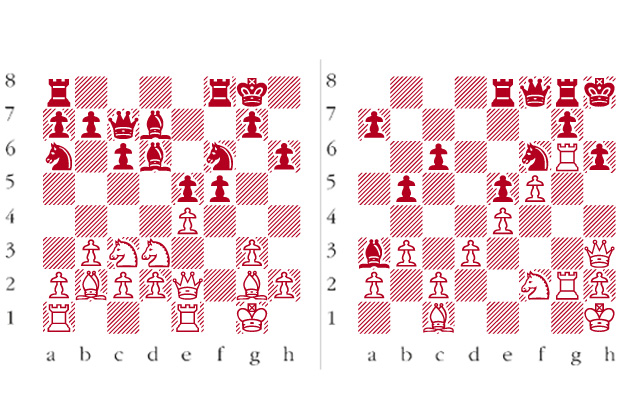This year’s London Classic tournament, organised by the indefatigable Malcolm Pein, who also heads up the charity Chess in Schools and Communities, is composed of several sections. The main group is graced by the presence of numerous elite international and British grandmasters, notably Viswanathan Anand, fresh from his title defence against Magnus Carlsen. All the action can be followed on www.londonchessclassic.com.
This week I pay tribute to historical chess events in the capital, starting with a victory from the London tournament of 1851, the first ever major international chess tournament, by the celebrated historian Henry Buckle. In fact Buckle had been the winner of an earlier event held in 1849 at what was to become Simpson’s-in-the-Strand, the traditional home of London chess. That 1849 tournament was, though, a purely national competition.
Buckle-Lowenthal: London 1851; Bird’s Opening
1 f4 f5 2 b3 Nf6 3 g3 The double fianchetto of White’s bishops was quite common in the mid-19th century, partly under the influence of Howard Staunton. However, it went out of fashion until Reti introduced his hypermodern ideas in the 1920s. 3 … e6 4 Bb2 Be7 5 Bg2 c6 6 Nc3 Na6 7 Nh3 d6 8 0-0 0-0 9 e3 Bd7 10 Qe2 h6 11 Rfe1 Qc7 12 Nf2 e5 13 fxe5 dxe5 14 Nd3 Bd6 15 e4 15 Rad1 is equal. With the text Buckle decides it is time to occupy the centre (see diagram 1). 15 … f4 A critical error after which White seizes the advantage. 15 … Rae8 is perfectly safe. If 15 … fxe4 16 Nxe4 Nxe4 17 Bxe4 Nc5 White has the trick 18 Nxe5 since 18 … Bxe5 19 Bxe5 Qxe5 20 Bh7+ wins the black queen. 16 gxf4 Bg4 If 16 … exf4 17 e5 wins a piece. Hence Black has lost a pawn for no compensation. 17 Qf2 Qd7 18 Qh4 Nh5 19 f5 Nf6 20 Ne2 Bxe2 21 Rxe2 Rae8 22 Kh1 b5 23 Bf3 Qf7 24 Rg1 Kh7 25 Rg6 Rg8 26 Reg2 Nb8 27 Nf2 Nbd7 28 d3 Kh8 29 Bc1 Be7 30 Bh5 Qf8 31 Qh3 Nxh5 32 Qxh5 Nf6 33 Qh3 Ba3 (see diagram 2) With an extra pawn and a dominating position it is scarcely a surprise that White has a decisive combination to hand. 34 Bxh6 Nh7 If 34 … gxh6 35 Rxh6+ Qxh6 36 Qxh6+ wins easily. 35 Bxg7+ Rxg7 36 Rxg7 Qxg7 37 Rxg7 Kxg7 38 Ng4 Bc1 39 Qh5 Re7 40 Qg6+ Kf8 41 f6 Black resigns A game which was, in many ways, ahead of its time. In the New York tournament of 1924, Richard Reti, armed with his new ideas, fianchettoed both bishops against his British opponent Frederick Yates, placed his knights on f3 and e3 and struck at the centre with d4, a curious parallel to Buckle’s handling of the opening more than 70 years earlier.
Raymond Keene
London classics

issue 07 December 2013




Comments